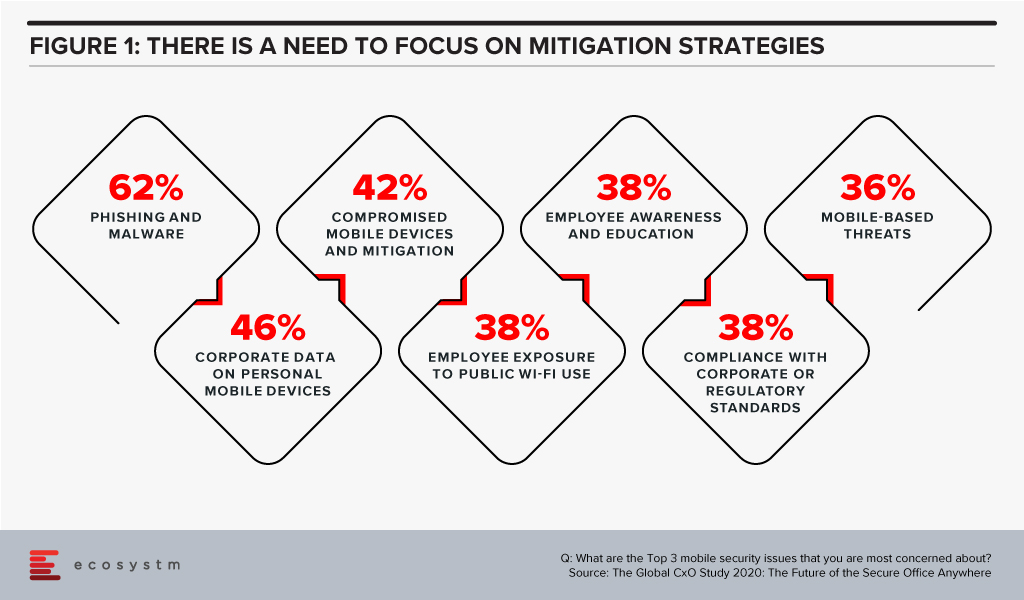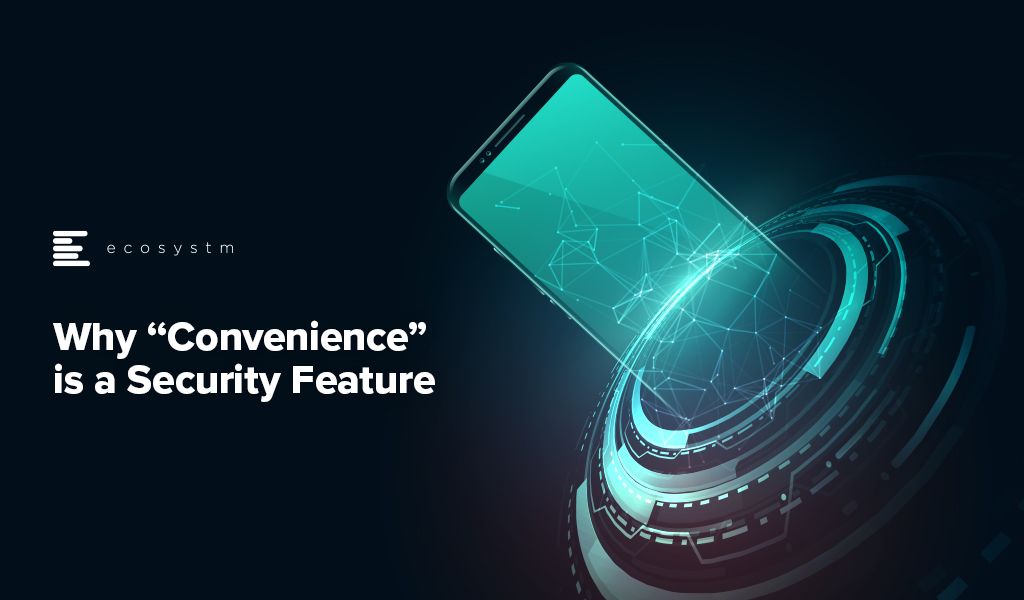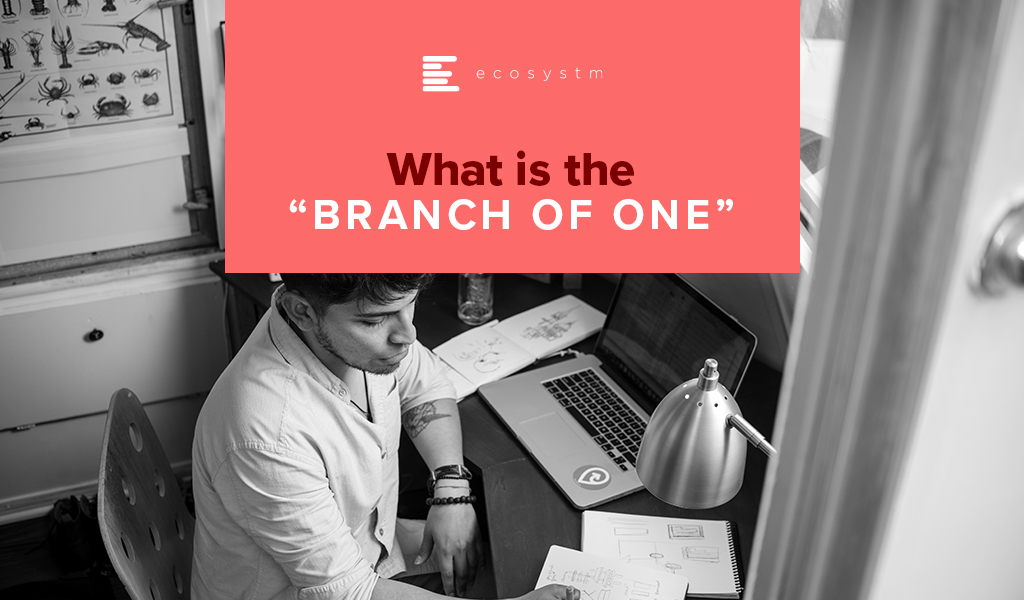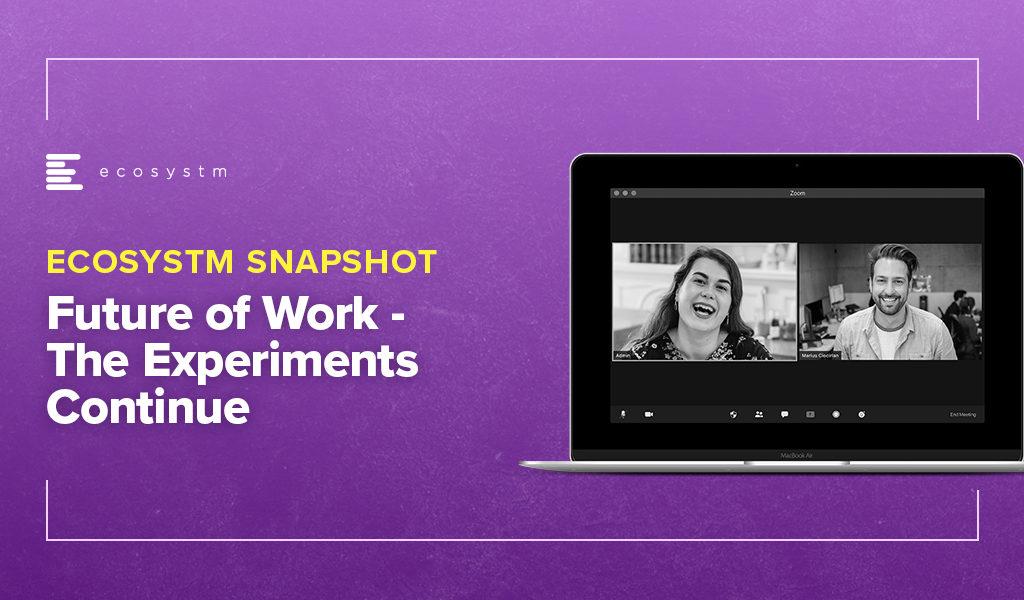Ecosystm recently partnered with Asavie to conduct a study on the opportunity and outlook for the “Branch of One“. The results of the study make us question whether organisations’ mobile security strategies are appropriate for the evolving business priorities, the ever-changing threat landscape, and a seamless employee experience.
To answer this question, organisations will need to examine their security frameworks.
COVID-19 has forced organisations to realise that cybersecurity is not only a business enabler – it is a business prerequisite. Our research shows that businesses world-wide no longer see the pandemic as something that we need to get through to get back to “business as usual”. Most acknowledge that remote working and access from anywhere will be the new normal for many employees and that means they need to revisit and reprioritise their spending and their focus.
In many cases, existing procedures and policies are not sufficient to cover this new working environment – and often the policies have not been clearly communicated to all employees. Moreover, many organisations still rely on legacy WAN technologies that make secure and flexible access difficult – something that my colleague, Tim Sheedy touched upon in his recent blog post.
The choice of WAN technology is an important part of any mobile security strategy, but so is the approach to securing endpoints on the WAN and – what is perhaps the weakest link – the behaviour of employees.
The Global CxO Study 2020: The Future of Secure Office Anywhere showed us that when it came to mobile security, organisations were mostly worried about phishing and malware – but 4 out of the top 5 mobile security concerns involved human error and failure to follow corporate IT security policies and guidelines (Figure 1).

Time to Evaluate New Mobile Security Features
This highlights the importance of a couple of “security features” that many IT organisations still tend to overlook – convenience and ease-of-use. When employees ignore IT policies, bypass security steps, use unsanctioned personal devices to process work data etc., they tend to do so for mainly one reason: because it is convenient for them. Employees just want to get the work done and following security protocols, making sure that devices have the right security software installed etc. is simply seen as too cumbersome or as slowing down the work process.
To counter this, ease-of-use and convenience need to an integral part of any security framework – especially when employees are no longer working in the office. IT managers tend to be a bit ego-centric when they think of these terms, i.e. for them ease-of-use relates to their experience in implementing and running the systems, but they really need to be extending the ease to their users – the employees – as well.
This is where Branch of One comes to the fore. It offers the convenience of employees not having to install or connect software or hardware on the mobile device and it allows administrators to easily scale and manage their mobile security framework. Security frameworks do not have to be in the way of getting the work done. Branch of One shows us that comprehensive mobile security can be nearly seamless.
Download the report based on ‘The Global CxO Study 2020: The Future of the Secure Office Anywhere’, conducted by Ecosystm on behalf of Asavie. The report presents the key findings of the study and analyses the market perceptions of Office Anywhere and the need for a ‘Branch of One’, which will be the foundation of enterprise mobile security in the future.

Ecosystm recently partnered with Asavie to conduct a study into the opportunity and outlook for the “Branch of One”. One of the challenges was actually defining what the Branch of One is. Here’s what we came up with:
Branch of One enables Office Anywhere by delivering secure, frictionless access to all business resources, with full mobility – meeting the security and manageability requirements of CIOs and CISOs.
Basically it is all the data and systems you need to get your job done, in your pocket. Secure. Easy to manage.
What I really like about the idea is that it describes what business is trying to achieve and it gives a common language and outcome for IT and business leaders. Consider all the things that IT and security teams need to do to enable access to applications and data in remote branches – from connectivity to security to data and system access. Often it takes days, weeks or months to open a new office or branch, or to provision a new retail store. Now, imagine having the ability to roll out all of these systems and services in seconds. To a single user or to thousands. Without consideration for location. Business leaders will understand this benefits and will support it.
It also has the opportunity to help nearly every business today. Of the 1005 businesses we interviewed across the globe in our Global CxO Study 2020, 44% admitted to suffering cyber-attack incidents during COVID-19 due to employees working from home – and over half of these attacks were on mobile devices. Compromised devices were the number one target for cyber-attacks in 2020.

Businesses need a new way to manage the devices and applications of their remote employees. They need to be able to extend the benefits of the WAN to them without the downsides of VPNs. Every business we interviewed saw benefits of bringing devices, locations and offices inside the WAN. Turning every device and office into a Branch of One.

A few security and network technologies have promised this capability – SDNs can offer a similar service, but they require client software to be installed. 78% of businesses we interviewed are using VPNs to bring devices inside the WAN – but again, they require client software, and can be inconsistent (and insecure!) on mobile devices.
Companies that embrace the Branch of One can provision new users in a few clicks. No software to install, no cables to connect, no hardware to provision – it makes life easier for technology and security professionals. The Branch of One gives your employees the systems and data they need to get their job done – delivered securely across the mobile network.
Download the report based on ‘The Global CxO Study 2020: The Future of the Secure Office Anywhere’, conducted by Ecosystm on behalf of Asavie. The report presents the key findings of the study and analyses the market perceptions of Office Anywhere and the need for a ‘Branch of One’, which will be the foundation of enterprise mobile security in the future.

In the recently published the Top 5 Cybersecurity & Compliance Trends for 2021 report Ecosystm predicts that 2021 is when M&As will ramp up in earnest to consolidate the fragmented cybersecurity market. The pandemic has slowed down M&A activities in 2020. Early signs of what we can expect from the market when we emerge from COVID-19 can be seen in the recent acquisition of Asavie by Akamai Technologies. The market is realising the full implication of the shift to remote working and the potential of increased cyber threats – and this acquisition is a sign that larger vendors will continue to strengthen their cybersecurity capabilities by acquiring vendors, with complementary capabilities.
Asavie Enabling the Secure Office Anywhere
Asavie, headquartered in Ireland, offers a global platform that manages the security, performance, and access policies for mobile and internet-connected devices. Asavie delivers secure access to business resources for a mobile workforce – without requiring installation and management of client software. Increasing mobile workloads and Office Anywhere trends mean that the enterprise private network is no longer just PCs/laptops. All enterprise endpoints must be considered to be a part of the enterprise network – and security and authentication solutions must be able to handle this. Organisations will need to explore options where they can give seamless access to their employees without straining their IT and cybersecurity teams – a rapidly installable, scalable, and cloud-managed solution will become a necessity.
More than ever before, enterprises will have to treat all endpoints as branches of the organisation, and the Future of Work goes beyond enabling home offices. The Global CXO Study: The Future of the Secure Office Anywhere finds that 66% of IT and business leaders think of multiple locations, when they think of Office Anywhere. Employees will work wherever they get the best work experience and are most productive. Future work patterns will require that all endpoints are considered as extended branches of the organisation. This involves the ability to extend the enterprise WAN – with speed, flexibility, and security in mind – whether it is a temporary or a home office, an ad-hoc point of sales or an employee on the go. Every employee or device should be treated like a Branch of One.
Ecosystm Comments

“Akamai has been diversifying away from its well-known content delivery network (CDN) offering and has successfully built its security business offering in recent years. In 2019, the company nearly doubled its security revenue to USD 849 million from just USD 488 million in 2017. In their 3rd quarter financial results reported in end October 2020, the Cloud Security Solutions revenue was US$266 million, up 23% year-over-year.”
“The move into the mobile security segment has been timely for Akamai as enterprise application and content is moving from behind the firewall to the cloud; adding to the criticality of the cybersecurity threat management. The COVID-19 pandemic has further driven the onboarding of businesses and consumers alike, adding to significant addressable market opportunities.”
“The acquisition of Asavie is a strategic move. Asavie’s solution effectively extends the enterprise security management to incorporate mobile devices as a ‘Branch of One’ enabling CIOs and CISOs to manage security and policies the same way as traditional enterprise network resources. The growth of 5G will further drive IoT devices and a myriad of applications and use cases which will provide for a significant growth opportunity for Akamai – the acquisition of Asavie is a positive move to support this trend.”
Akamai Strengthens Intelligent Edge Capabilities
Asavie’s mobile, IoT and security solutions will integrate with Akamai’s Security and Personalisation Services (SPS) product line sold to carrier partners that embed the solution within the technology bundle sold to their subscribers. With the Asavie acquisition, Akamai intends to help their carrier partners address enterprise and mid-market customer demand for IoT and mobile device security and management services.
Ecosystm Comments

“The addition of Asavie to Akamai’s SPS product line provides synergy for the company to expand into new addressable markets for the remote workforce and internet-connected devices to deliver superior experience in a multi-cloud environment. The Global CXO Study conducted by Ecosystm found that three quarters of the organisations rate mobile security as an important or very important part of their digital transformation strategy. Secure mobile experiences will be a core element of the enterprise going forward in the post COVID-19 business environment – driven by employee needs for mobile services and corporate resources from remote locations, with superior identity and policy management, in a frictionless manner.”
“There is an opportunity for mobile service providers and mobile virtual network operators (MVNOs) to leverage the Asavie solution combined with Akamai’s strength at the edge with over 1,500 networks worldwide to offer cloud-based value-added cybersecurity services. The Global CXO Study also found that scaling of endpoint security was a major pain point for half the organisations with more than 100 branches. Service providers can become the enabler by offering services for small and medium enterprises (SMEs) to dynamically adapt their network and security services to fluctuating demand conditions.”

“Although Akamai does offer CDN services for the SME segment, the company heavily relies on service providers and carriers to address this segment in the CDN, cloud security and its burgeoning IoT Edge offerings. Asavie’s market approach is similar and its products and services portfolio appears to complement Akamai’s very well, making it a very good fit for the company. Not only will it enhance Akamai’s SME positioning on the secure connectivity space, but it will also boost its offerings for carriers in the IoT space.”
“Carriers have had a checkered history at best, in understanding and making the most of data services. Mobile Internet took off because of smartphone manufacturers (Apple) and Internet companies – not through carrier offerings. Although carriers appear to be more proactive and forward-looking with regards to IoT, they should not expect to have the foresight to see what services and business cases will make 5G and IoT truly profitable. Rather, their main focus should be on enabling the secure and flexible infrastructure that can ultimately enable others to develop the use cases. The next logical step would then be for carriers to develop IoT orchestration platforms that can manage much larger parts of the IoT value chain. If they succeed in this (and even if they don’t) it could result in a major boost for Akamai’s CDN business.”
“In other words, carriers need help with IoT and to that end, Akamai’s acquisition of Asavie may strengthen its ability to support carriers to reach that goal.”
The full findings and implications of The top 5 Cybersecurity & Compliance Trends For 2021 are available for download from the Ecosystm platform. Sign up for Free to download the report.

Organisations across the world are experimenting with what work model would work best for them in 2021. The last week saw several announcements that make it clear that irrespective of the model that becomes prevalent, remote working and the hybrid/blended work model are here to stay.
Remote Working Remains a Reality in 2021
The reduced demand for office space has led companies to re-think their lease renewals and physical space requirements. Deloitte has announced that it will close 4 of its 50 offices in the UK. The four offices in Gatwick, Liverpool, Nottingham and Southampton employ around 500 people who would be allowed to move to other locations or offered permanent remote working options. Ecosystm research finds that about a quarter of global organisations expect to reduce commercial office space in 2021.
Most organisations have introduced remote working options till the end of 2020 and beyond; while some others have made working from home a permanent option. Organisations will have to re-evaluate when employees can be realistically expected to come back into the office, and many will extend their work from home policy. Amazon recently announced the extension of its work from home policy till June 2021, from January 2021. Other organisations are expected to follow suit as the virus continues to be active in many countries.
The Experimentation will Continue
Companies will continue to enable seamless collaboration that spans across virtual and physical realms. But what will be important is to see how organisations can successfully incorporate a remote working culture across its different locations. Dropbox has announced a new ‘Virtual First’ remote working policy which includes features such as the ability for employees to decline unnecessary meetings, and a way to open source their learnings with the wider business community. Dropbox will still retain some physical spaces called Dropbox Studios, that will either be repurposed office space or entirely new spaces designed for meetings, group events and special offsites. The core collaboration hours will typically be between 9am-1pm, as employees are no longer expected to be in the same locations or time zones.
Ecosystm Principal Advisor Ravi Bhogaraju says, “Flexibility (Work from home or Office Anywhere) is a company strategy and not a tactic. It needs to be evaluated within the context of the overall strategy of the company, how it creates value and how technology and talent can help provide better customer experience.”
Another experiment that was announced last week was Dubai’s efforts to revive its tourism industry. Remote working has been associated with stress and organisations are increasingly having to monitor employee emotional well-being. To overcome this, Dubai is inviting overseas remote workers to expand their workplace and remote working environment. Dubai’s new remote working program is welcoming remote workers with a valid passport, health insurance, proof of employment and a minimum monthly salary of USD 5,000 to visit and work from Dubai. Programs such as these highlights the potential change in the work environment that we might witness.
Talking about the implications of such moves on organisations, Bhogaraju says, “having everybody as free agents within the network working from anywhere – without fully enabling the process and workflows across teams and the entire organisation – will require a lot more patching or coordination. It can impact the customer experience, and also opens up the firms to compliance, tax and regulatory risks if not carefully managed – especially when cross-border work is involved.”
With experiments such as these, it will become even more important for organisations to ensure that they have the right technology in place that can not only ensure seamless access to company resources irrespective of the location of the employees but also that IT and cybersecurity teams are not overburdened by the need to secure the endpoints and network.
Other Factors to Consider
While organisations must keep working on understanding the right model that will work for them, there are some other factors that they should consider.
Ecosystm Principal Advisor, Mike Zamora says, “what employees are learning is that their home expenses are increasing – E.g. electricity, connectivity costs, and even food where employers have previously provided snacks, beverages and lunches. Increasingly this needs to be addressed by Businesses in order to maintain a strong connection with employees. If not, when the economy recovers, companies might find their talent moving to other companies.”
“As some companies have limited return to the office, the Business and Employees have learned what is essential to be completed at the office. This is usually collaborative tasks which cannot effectively be done through remote collaboration. In addition, there are some specialised assets (special work rooms for some industries) which cannot cheaply or effectively be recreated in the home environment.”
Bhogaraju also cautions, “an advantage of working from anywhere is that it opens up talent pools that were not available or accessible to employers before. However, without knowing what kind of employees would be needed to sustain the strategy on a mid to long-term basis the hiring would probably result in poor fit to the working environment – and lead to a spike in attrition as the employees would not be able to cope with the working arrangement.”
Download Ecosystm Predicts: The top 5 Future of Work Trends For 2021
The full findings and implications of The top 5 Future of Work Trends For 2021 are available for download from the Ecosystm platform. Signup for Free to download the report .

Juniper Networks has entered into an agreement to acquire Massachusetts-based 128 Technology for USD 450 million that will enhance its AI-driven enterprise networking portfolio. The deal is expected to close by the end of 2020. The combined portfolio of 128 Technology’s Session Smart™ networking and Juniper’s Mist AI platform will bolster Juniper’s AI expertise in SD-WAN technology.
Ecosystm Principal Advisor, Ashok Kumar says, “Juniper Networks has been a major player in enterprise networking from the core to the edge of the network with SD-WAN, WLAN, and AI-driven applications aware network products. Juniper had strengthened their enterprise networks portfolio with the acquisition of WLAN vendor Mist Systems in 2019 which provided cloud-based management and an AI engine. With Juniper’s acquisition of 128 Technology the network transformation process in the industry will continue.”
The platform created by 128 Technology bases decisions on real-time sessions instead of legacy static systems and networking approaches. The newer system created through this by Juniper will use AI to automate sessions and policies for a full AI-driven WAN operation – from initial configuration to customisable actions across various levels, and AI-driven support.
In addition to this, the automation is expected to reduce overheads, minimise IT costs and deliver better client and user-experience through automated network optimised for client-to-cloud. The two companies also aim to optimise the network and user experiences for voice, 5G and collaboration. Juniper continues to evolve the enterprise networking portfolio adding to the acquisition of WLAN start up Mist Systems for USD 405 million last year. Juniper’s AI -driven SD-WAN and networking products and services for enterprises and end-users is a step towards smart LAN and WAN environments.
A recent study on The Future of the Secure Office Anywhere, conducted by Ecosystm on behalf of Asavie found that 56% of global organisations are looking to improve employee experience, as they look beyond the COVID-19 crisis. The feedback from over 1,000 business and technology leaders globally, also finds that 55% of the organisations are also focused on digital transformation. This will require a re-evaluation of enterprise network solutions, to give employees seamless access to company resources as they continue to work remotely.
“Enterprise communications is being transformed to a user-centric, session-oriented distributed model from a legacy network-oriented centralised WAN model. In the new remote working environment of Office Anywhere, the traditional use of VPN in combination with first-generation SD-WAN will become an impediment going forward. Enterprises will need to re-design networks to address each end-user’s unique needs and their access to applications and all business resources as though they were a Branch of One.”






